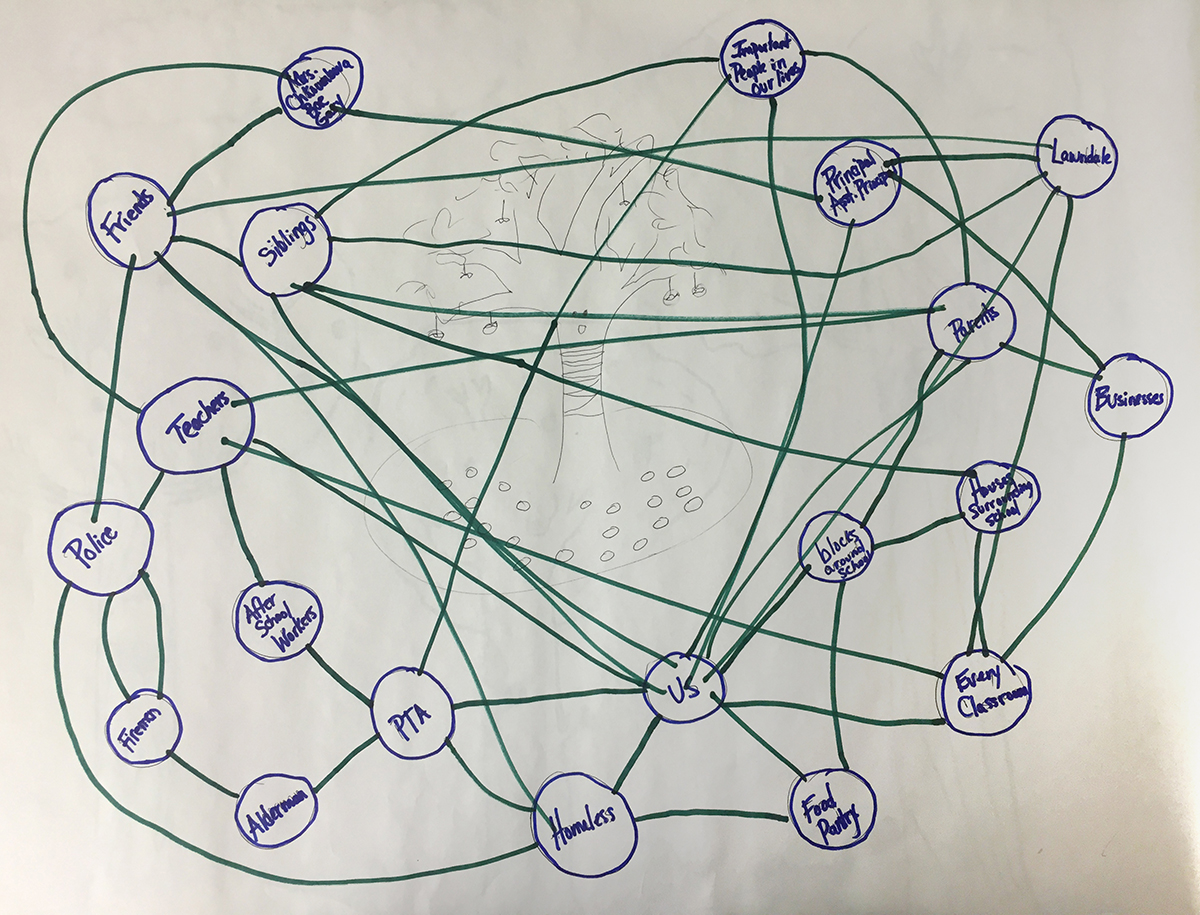Agents of Change
By Mary Haddad
"Agents of Change” are students empowered to make contemporary art with their community, promoting initiatives they have selected as important and significant to who they are in the world around them. A diverse group of third through sixth grade students participated in an after-school enrichment program to explore the concepts of visibility and invisibility. Students collaborated to create art installations comprised of artifacts that were contributed by community members. Through learning about community members’ personal narratives and documenting the entire project online, students gave voice to individuals in their community.
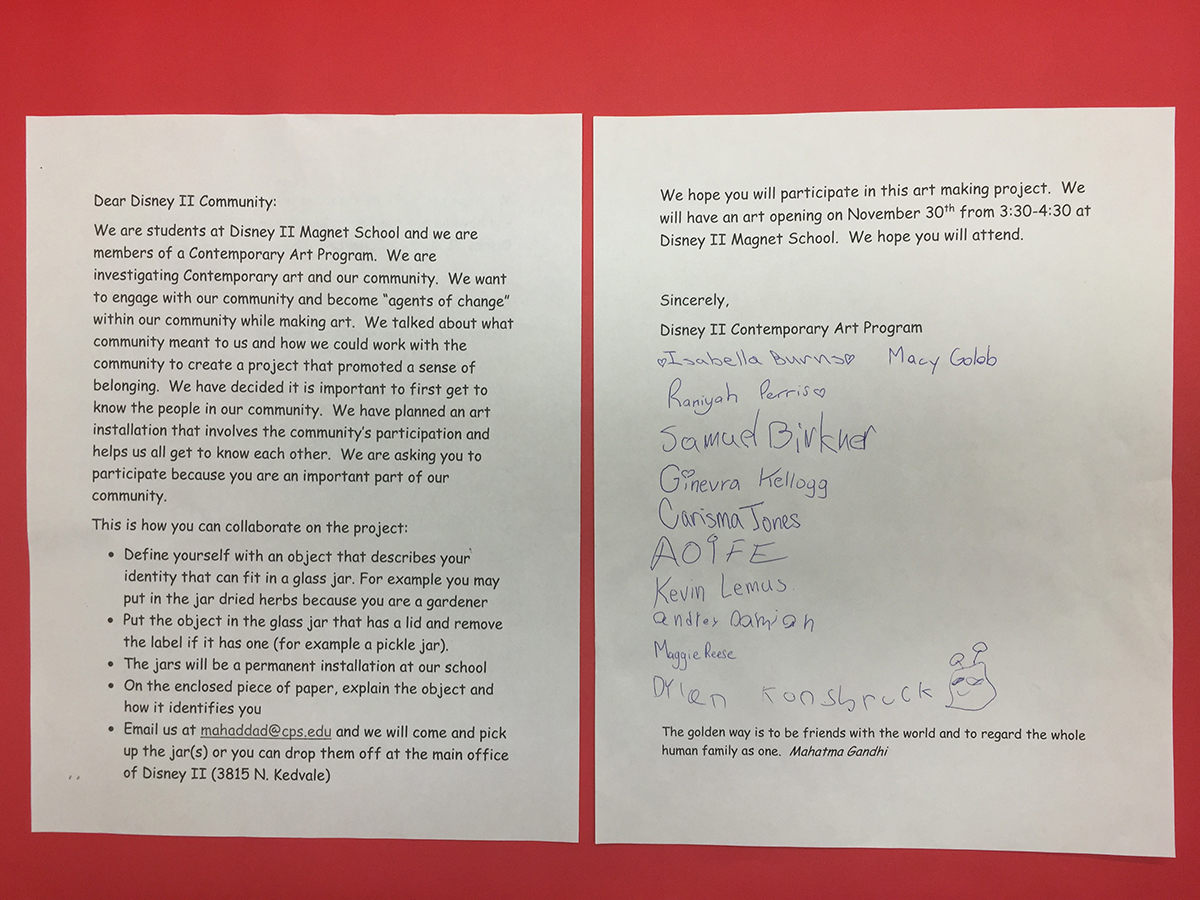
Goals and Objectives
- Students will develop their own means of collaboration through discussion, research, and through examining how contemporary artists collaborate with communities.
- Students will engage the community according to their own ideas of how they might strengthen that community.
- Students will make contemporary artwork that involves community participation.
Guiding Questions
- Why are community spaces important?
- How can we make art with members from the community to address the issue of invisibility in our community?
- Who is included or excluded from community spaces?
- When do you feel invisible? When do you feel visible?
- How does it feel / what does it look like / what does it sound like when you are invisible or visible?
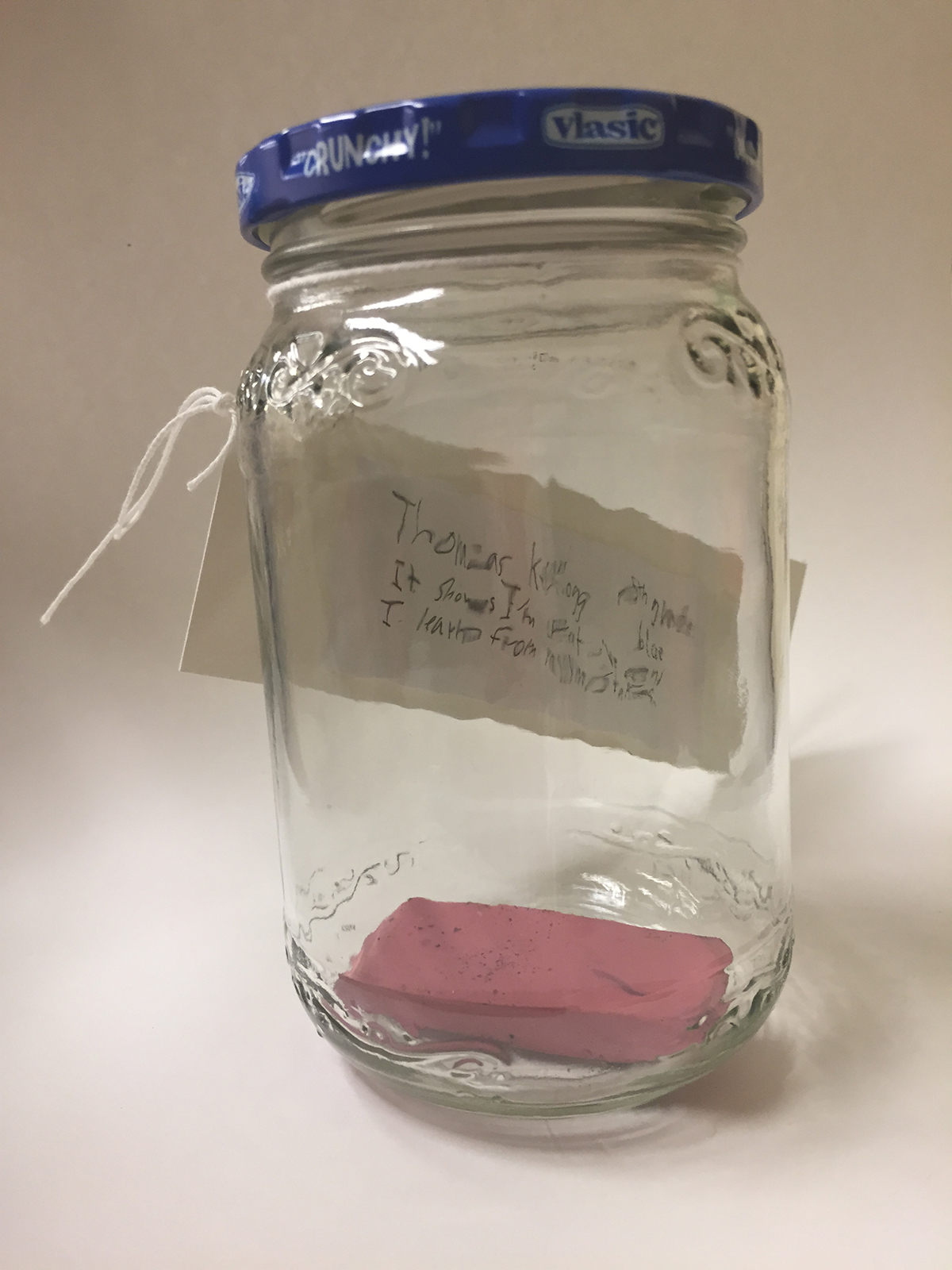
Documentation + Assessment
- Students and teacher photographed each component of the project, from their diagramming exercises to the MCA field trip.
- Students and teacher worked together to document the whole project on the Agents of Change website.
- During the development and review of the website, students used the smartboard to make selections of content to add, edit, and delete.
- Students assessed their learning in a peer-assessment that they designed to evaluate their understanding and attainment of their goals. They also required exit slips from the community members to evaluate their experience.
Learning Activities
Step 1
Introduce Contemporary Art
Teacher projects images of artworks by contemporary artists and guides students in identifying and describing the qualities of contemporary artworks.
Step 2
Visit the Museum of Contemporary Art
Students view the Kerry James Marshall exhibition, Mastry, and engage in critical dialogue with artist guides. Conversation focuses on themes of invisibility, visibility, and community.
Step 3
Defining Our Inquiry
Inspired by viewing Kerry James Marshall's works, students share stories about times when they have felt invisible in their communities. They collectively determine that people not knowing the individuals in a community prevents a true sense of belonging within that community. Teacher asks the guiding question: How can we make art with the community and address the issue of people not knowing each other? Students suggest various approaches, gravitating toward a theme of using everyday objects to represent themselves.
Step 4
Learning to Work Together
Teacher facilitates an opportunity for the students to work together to create a temporary art installation in a public space. Teacher gives students materials such as boxes of tin foil, and asks them to improvise in their roles as collaborators as they transform the space.
Step 5
Strategies for Building Community
Working in small groups, students respond to the prompt: What is community? Students create drawings of what community looks like to them, connecting their descriptions using lines. Teacher asks students to classify resulting images using a diagram of concentric circles, going from the personal (center) to the global (outer circle). Students reflect on possible art activities that involve people from multiple “rings” of their collective community.
Step 6
Identity in a Jar
Each student fills a jar with objects that relate to their identity and shares it with the class. Students then ask community members to define themselves using the same process, crafting an invitation letter that explains each step and requests the physical artifact for an art installation. Each artifact contains a small note explaining the individual’s object choice.
Step 7
Rock Garden
Building on the collaborative experience in Step 6, students decide to continue the community-sourced installation by asking community members to contribute a rock to a permanent rock garden. Students request a rock that is symbolic of something important to each individual, along with a brief note explaining the history of the rock.
Step 8
Status Check
Students come together to assess progress in gathering objects from the community and reflect on the content being shared by the participants. The stories the community share are insightful, and students determine how they might best give voice to these narratives in the final installation.
Step 9
Installation
Students plan and host an art opening after school to showcase the art objects contributed by the community. At the event, students lead conversations with community members about the project and share their process with attendees by displaying their documentation and sketches.
Step 10
Legacy and Next Steps
Students work with two volunteers to design and create spaces for the project’s permanent installation. Students reflect on their roles in building community through collaborative artmaking and identify potential next steps toward promoting further community participation. Students and teacher collaborate to edit all documentation of the project for access on a public website.
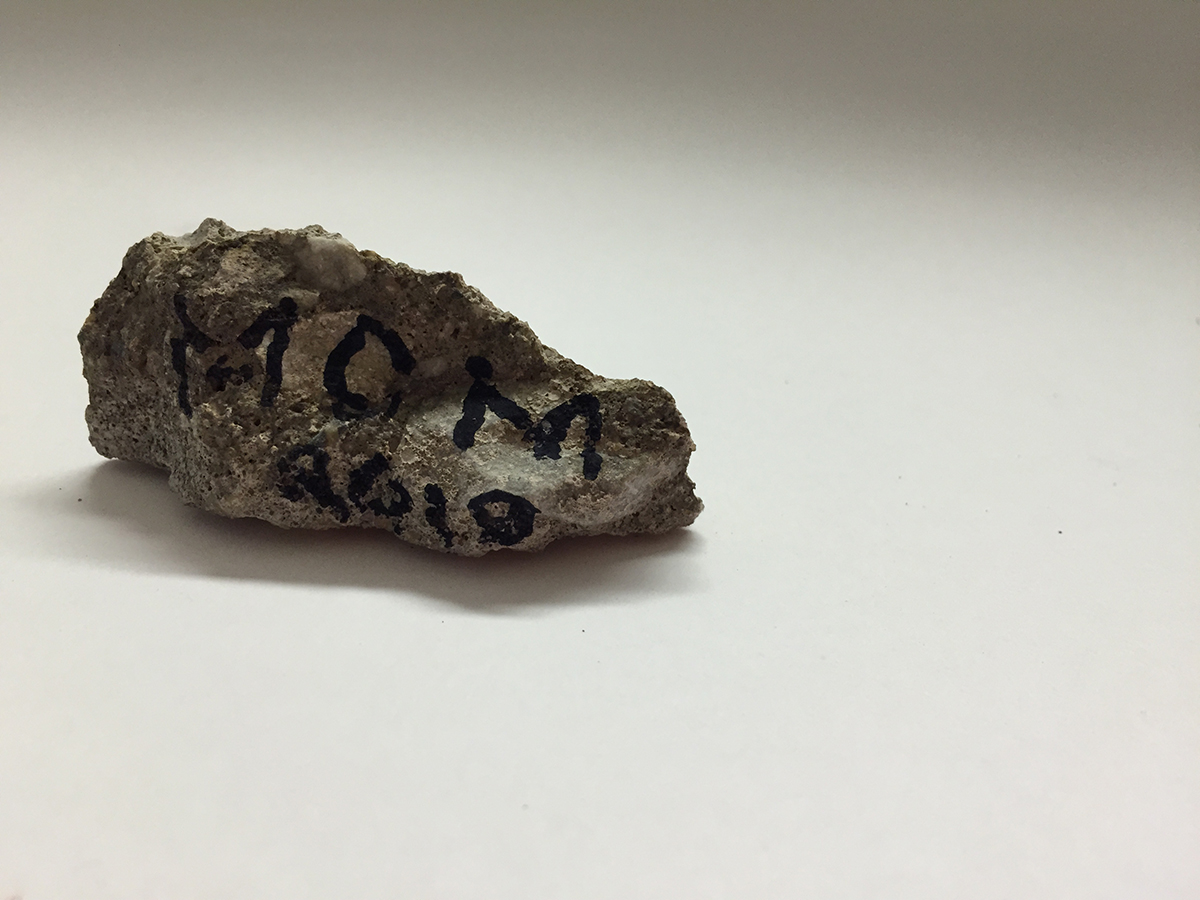
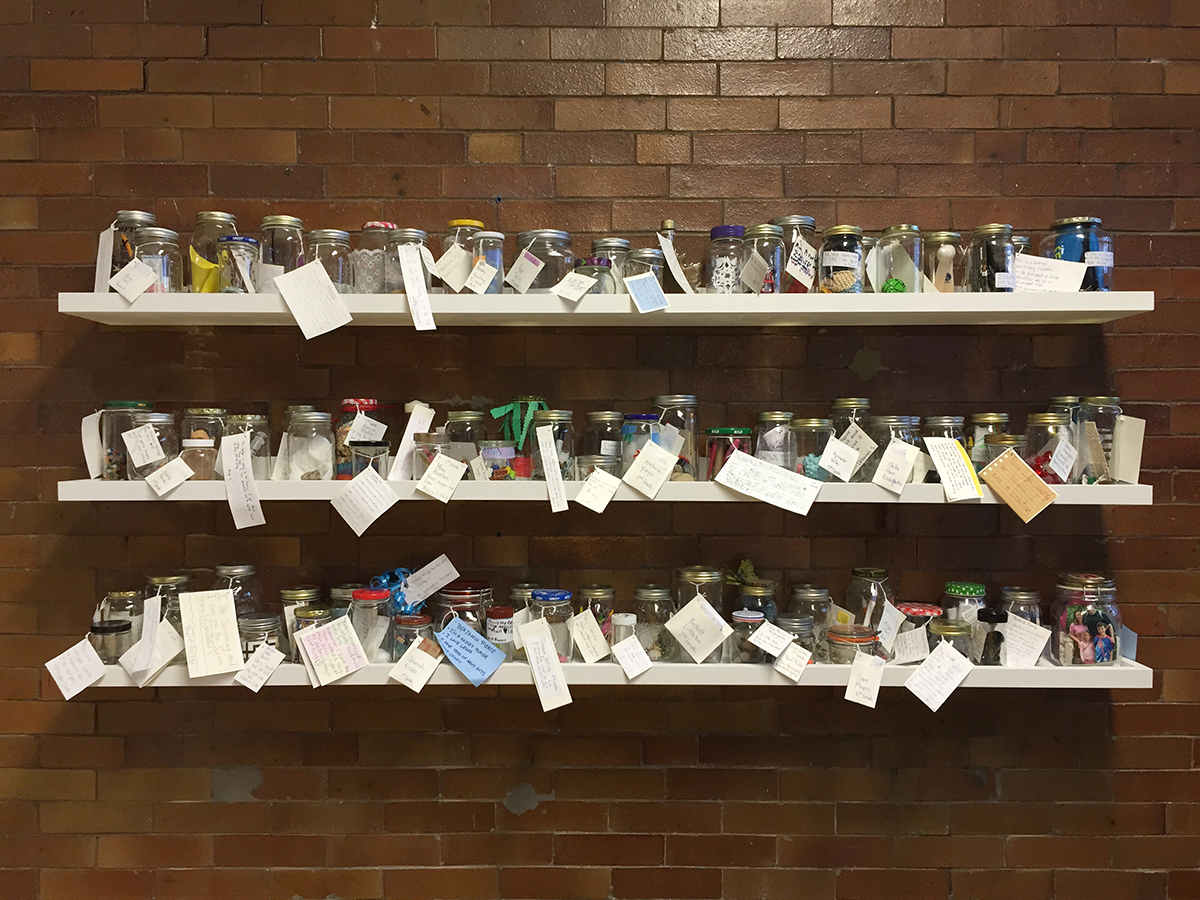
Materials
- Found objects
- Glass jars
- Rocks
- Paper
- Tin Foil
- Website (Wix)
MCA Connections
Students viewed the major MCA survey of one of America’s greatest living artists — Kerry James Marshall. The Mastry exhibit featured Marshall’s paintings made over the last 35 years. Students focused on concepts and questions about invisibility and visibility in their viewing and discussion of Marshall’s work. These themes guided the conceptual framework for the rest of the project and helped students understand how artworks can help to generate discussions about relevant issues in their lives.
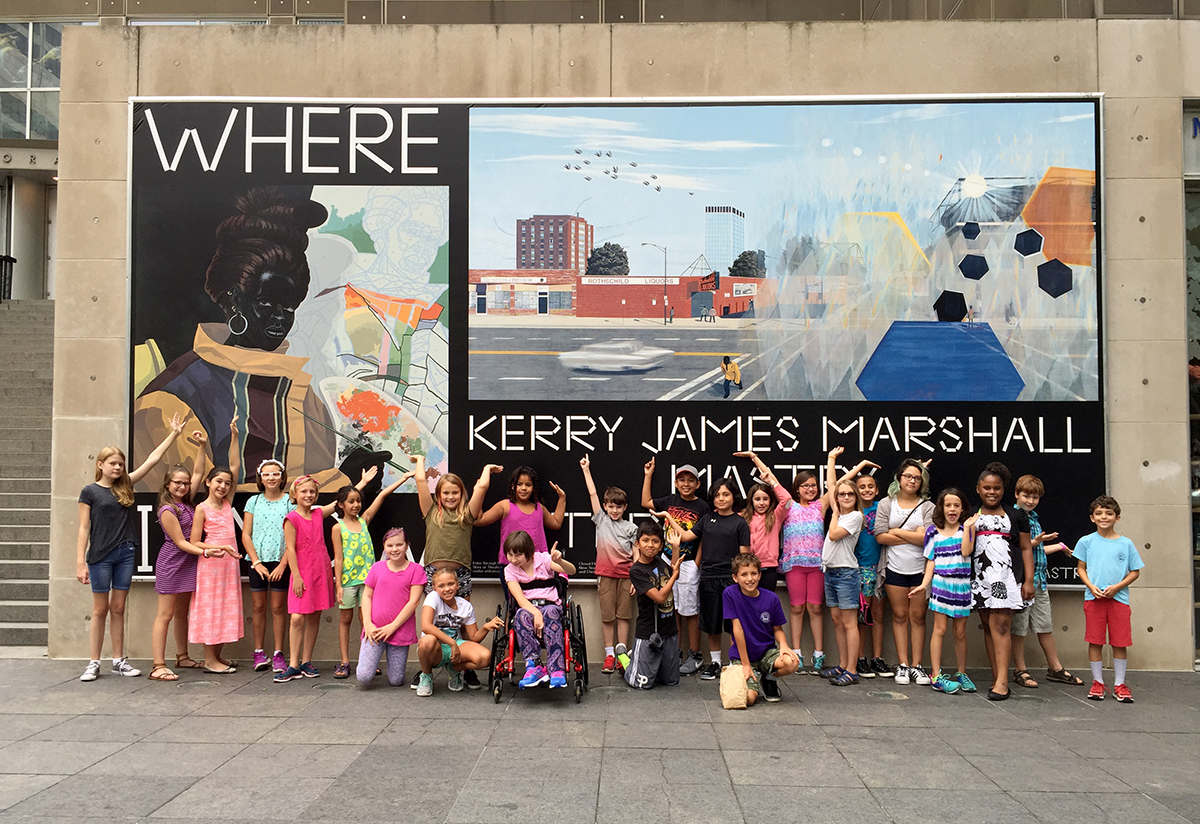
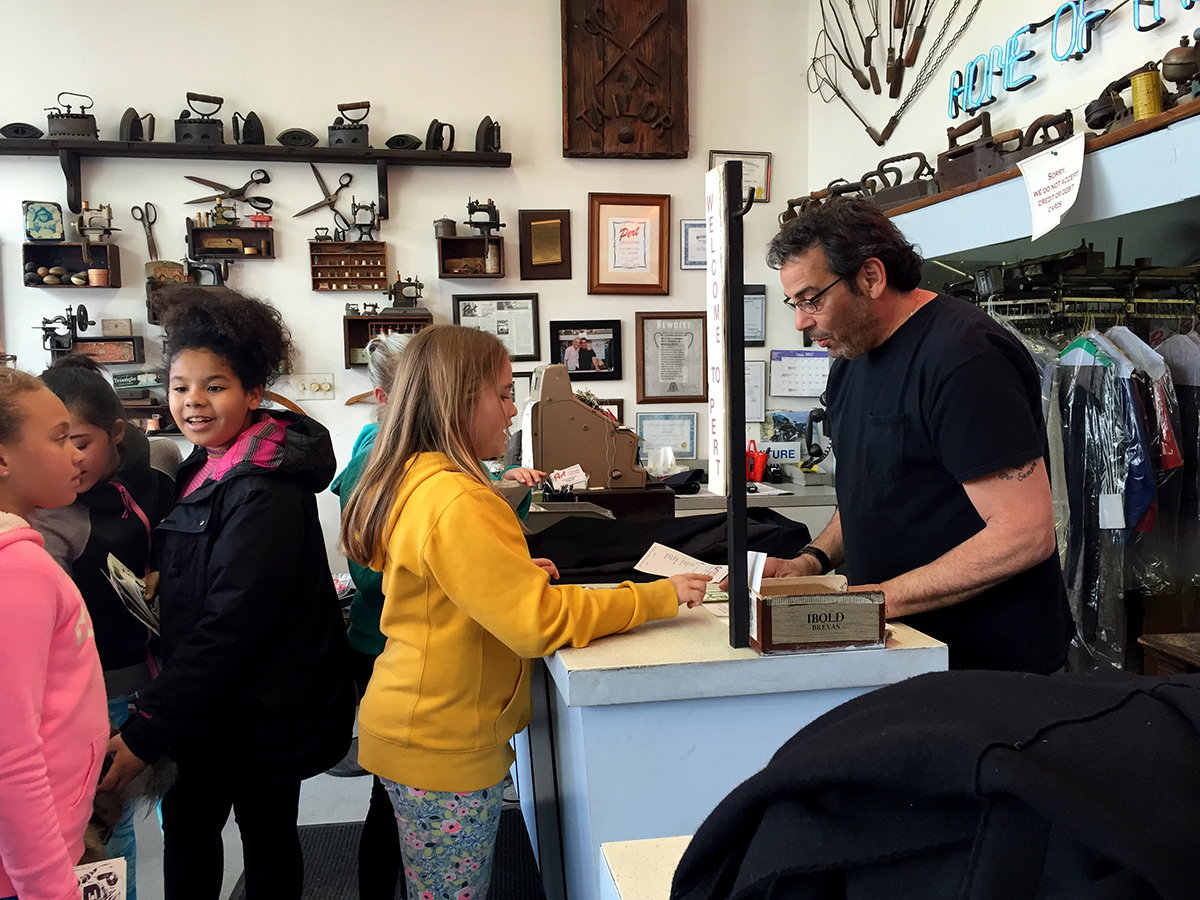
References + Resources
Mary Haddad
Disney II Magnet School
Mary Haddad has been teaching art in Chicago Public Schools since 1999. She is committed to her professional growth and has received support from grants and fellowships, including a fellowship to study art history and ceramics throughout Italy and France. She is a National Board Certified teacher. She is a founding member of her current school, Disney II Magnet, where she teaches visual and performing arts.
Mary reflects on her process
The content of the contributions by community members was unexpectedly emotional and rich. The stories were personal and moving, showing a very tender human side that people were compelled to share. We all appreciated the insight students were offered into the lives of those around them, and it left us wanting to learn more.
The experience has made us consider ways we might further connect with community members and encourage their involvement in collaborative artmaking. After reviewing the documentation to create the website, the students were compelled to continue creative actions that involve community participation, such as taking a walking field trip to reach out to the community.
